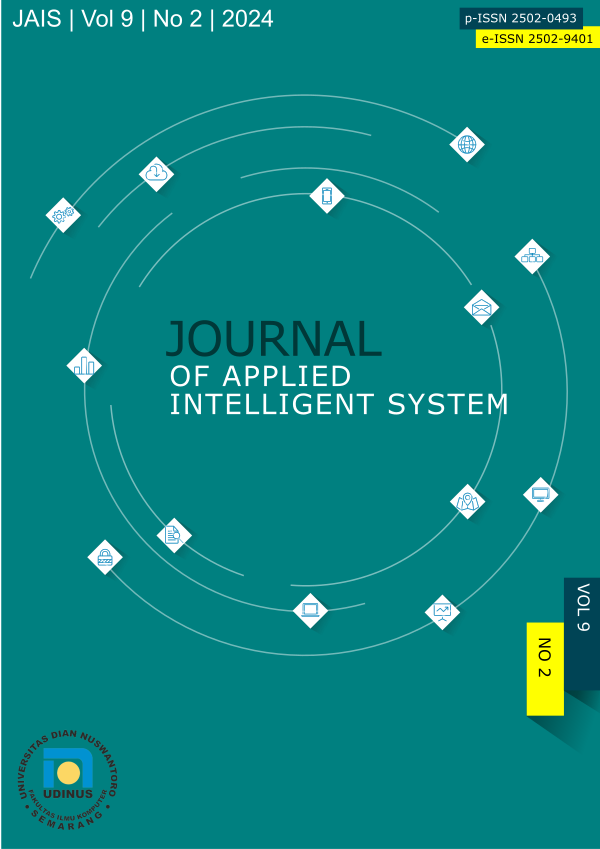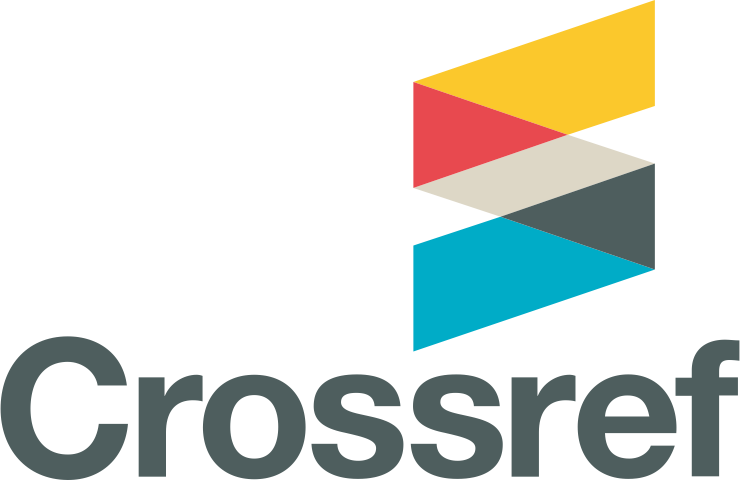Smart Waste Management and Recycling Based on IoT using Machine Learning Algorithm
DOI:
https://doi.org/10.62411/jais.v9i2.10766Abstract
Smart waste management and recycling have become critical issues in urban planning and environmental sustainability due to the increasing volume of waste generated by modern societies. In this study, we investigated the performance of Support Vector Machine (SVM) and Neural Network (NN) methods in an Arduino-based waste sorting system. Our testing phase revealed exceptional performance, with SVM achieving an accuracy of 92% and NN achieving 96%, alongside perfect precision, recall, and F1-score metrics. The consistent True Positive (TP) results across all waste categories underscored the system's capability to accurately direct waste into correspondingcolored bins. These findings highlight the significance of automated waste management systems in promoting effective waste sorting practices and facilitating sustainable recycling efforts. Moreover, advancements in technology and machine learning algorithms offer promising prospects for further enhancing the efficiency and scalability of such systems, thereby contributing to a cleaner and healthier environment for future generations. Future research in smart waste management could focus on exploring additional machine learning algorithms, advanced sensor technologies, and Internet of Things integration. Investigating alternative algorithms beyond SVM and NN, adopting advanced sensors like hyperspectral imaging or lidar, and incorporating IoT devices for real-time monitoring could enhance waste sorting accuracy and scalability.References
Y. A. Fatimah, K. Govindan, R. Murniningsih, and A. Setiawan, “Industry 4.0 based sustainable circular economy approach for smart waste management system to achieve sustainable development goals: A case study of Indonesia,” J Clean Prod, vol. 269, Oct. 2020, doi: 10.1016/j.jclepro.2020.122263.
Y. Popova and I. Sproge, “Decision-making within smart city: Waste sorting,” Sustainability (Switzerland), vol. 13, no. 19, Oct. 2021, doi: 10.3390/su131910586.
C. Agus Sugianto, “ANALISIS KOMPARASI ALGORITMA KLASIFIKASI UNTUK MENANGANI DATA TIDAK SEIMBANG PADA DATA KEBAKARAN HUTAN,” 2015.
M. Farjana, A. B. Fahad, S. E. Alam, and M. M. Islam, “An IoT- and Cloud-Based E-Waste Management System for Resource Reclamation with a Data-Driven Decision-Making Process,” Internet of Things, vol. 4, no. 3, pp. 202–220, Sep. 2023, doi: 10.3390/iot4030011.
K. N. A. Rani et al., “Mobile Green E-Waste Management Systems using IoT for Smart Campus,” J Phys Conf Ser, vol. 1962, no. 1, p. 012056, Jul. 2021, doi: 10.1088/1742-6596/1962/1/012056.
Md. W. Rahman, R. Islam, A. Hasan, N. I. Bithi, Md. M. Hasan, and M. M. Rahman, “Intelligent waste management system using deep learning with IoT,” Journal of King Saud University - Computer and Information Sciences, vol. 34, no. 5, pp. 2072–2087, 2022, doi: https://doi.org/10.1016/j.jksuci.2020.08.016.
S. Bin Hulayyil, S. Li, and L. Xu, “Machine-Learning-Based Vulnerability Detection and Classification in Internet of Things Device Security,” Electronics (Basel), vol. 12, no. 18, p. 3927, Sep. 2023, doi: 10.3390/electronics12183927.
A. Mozo, A. Karamchandani, L. de la Cal, S. Gómez-Canaval, A. Pastor, and L. Gifre, “A Machine-Learning-Based Cyberattack Detector for a Cloud-Based SDN Controller,” Applied Sciences (Switzerland), vol. 13, no. 8, Apr. 2023, doi: 10.3390/app13084914.
D. del-Pozo-Bueno, D. Kepaptsoglou, F. Peiró, and S. Estradé, “Comparative of machine learning classification strategies for electron energy loss spectroscopy: Support vector machines and artificial neural networks,” Ultramicroscopy, vol. 253, Nov. 2023, doi: 10.1016/j.ultramic.2023.113828.
O. A. Montesinos López, A. Montesinos López, and J. Crossa, Multivariate Statistical Machine Learning Methods for Genomic Prediction. Springer International Publishing, 2022. doi: 10.1007/978-3-030-89010-0.
M. Daviran, M. Shamekhi, R. Ghezelbash, and A. Maghsoudi, “Landslide susceptibility prediction using artificial neural networks, SVMs and random forest: hyperparameters tuning by genetic optimization algorithm,” International Journal of Environmental Science and Technology, vol. 20, no. 1, pp. 259–276, Jan. 2023, doi: 10.1007/s13762-022-04491-3.
V. Asadpour, E. J. Puttock, D. Getahun, M. J. Fassett, and F. Xie, “Automated placental abruption identification using semantic segmentation, quantitative features, SVM, ensemble and multi-path CNN,” Heliyon, vol. 9, no. 2, Feb. 2023, doi: 10.1016/j.heliyon.2023.e13577.
V. Asadpour, E. J. Puttock, D. Getahun, M. J. Fassett, and F. Xie, “Automated placental abruption identification using semantic segmentation, quantitative features, SVM, ensemble and multi-path CNN,” Heliyon, vol. 9, no. 2, Feb. 2023, doi: 10.1016/j.heliyon.2023.e13577.
M. Reyad, A. M. Sarhan, and M. Arafa, “A modified Adam algorithm for deep neural network optimization,” Neural Comput Appl, vol. 35, no. 23, pp. 17095–17112, Aug. 2023, doi: 10.1007/s00521-023-08568-z.
M. M. Sardeshmukh, M. Chakkaravarthy, S. Shinde, and D. Chakkaravarthy, “Crop image classification using convolutional neural network,” Multidisciplinary Science Journal, vol. 5, no. 4, 2023, doi: 10.31893/multiscience.2023039.
Downloads
Published
Issue
Section
License
Copyright (c) 2024 Gerinata Ginting, Riri Damayanti Apnena

This work is licensed under a Creative Commons Attribution-NonCommercial 4.0 International License.
- Authors retain copyright and grant the journal right of first publication with the work simultaneously licensed under a Creative Commons Attribution License that allows others to share the work with an acknowledgment of the work's authorship and initial publication in this journal.
- Authors are able to enter into separate, additional contractual arrangements for the non-exclusive distribution of the journal's published version of the work (e.g., post it to an institutional repository or publish it in a book), with an acknowledgment of its initial publication in this journal.
- Authors are permitted and encouraged to post their work online (e.g., in institutional repositories or on their website) prior to and during the submission process, as it can lead to productive exchanges, as well as earlier and greater citation of published work (See The Effect of Open Access).









